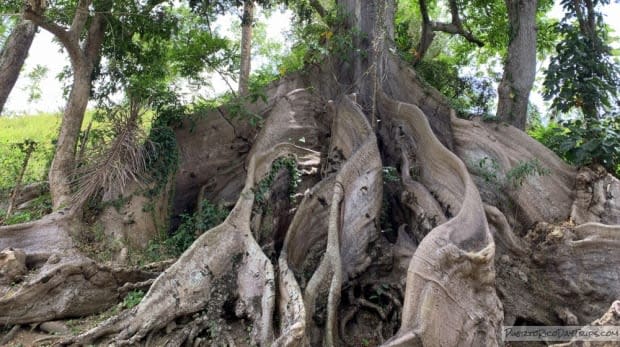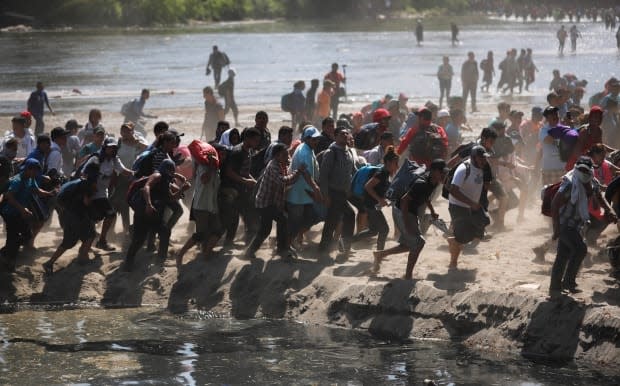Surviving the Guatemala massacre, torture and PTSD through storytelling

Jeremías Tecú hid from the Guatemalan militia between the roots of a massive inup tree with his mother and younger siblings every night for more than two weeks.
The year was 1981 and Tecú was 11 years old. He and his family were trying to survive a massacre during a civil war that would leave more than 200,000 Indigenous Mayans dead.
Massacres by the Guatemalan regime in the early 1980s destroyed 626 villages, including Ceiba, Tecú's village.
From the tree roots during the violence, Tecú could make out the silhouettes of other people hiding, just as he was.
"That tree was, every single night for about 15 days, our shelter," the Fredericton resident said of the 180-foot tall inup, the Mayan symbol for life.
Years later, after dedicating his life to speaking out against corruption and Indigenous murders in Guatemala, Tecú was kidnapped and tortured in 1999.
He escaped to neighbouring Mexico in 2000 and was granted refugee status in Canada, where he arrived 19 years ago with his wife and kids.
In collaboration with Moncton-based therapist Eve Mills Allen, Tecú's life story has been told in a book that launched this month: In the Arms of Inup: The extraordinary story of a Guatemalan survivor and his quest for healing from trauma.

The massacre
The background to Tecú's story begins in the 1950s, when Guatemala's land was owned by a few rich families. Through protests, the country's working class demanded equality.
But after some of the land was redistributed to peasants, many of them Indigenous Mayan people, a civil war began.
The terror that ensued lasted about 36 years, from 1960 to 1996, and throughout those years, the government murdered more than 10 per cent of the Mayan population, reducing it from over 50 per cent of Guatemala's population to about 40 per cent.
The government labelled the Indigenous Mayans communists to try to justify the slaughter, although the Mayans were protesting for land that was theirs.
Tecú's aunt and uncle were among the Mayan casualties.
After their murder, Tecú's home was set on fire and, along with his mother and siblings, he left his village and walked for 45 days until he reached Guatemala City.

Tecú's fear of being massacred stayed with him for years, until he landed in Fredericton in 2002.
And after that, a new kind of fear settled over him. Tecú, who now works as a settlement worker, suffered from untreated post-traumatic stress disorder, often working long hours or drinking to forget the mass-slaughter he witnessed as a boy.
"I would go into a liquor store, for example, to buy a six pack," he said. "That's how I got at least one hour of sleep."
"You can be in paradise but the memory is there. They come back to your mind."
Eight years ago, a lifeline materialized in front of Tecú, in the form of paper and pencil and a therapist eager to listen.
How they met
In 2013, Mills Allen facilitated a writing group at the Multicultural Association of Fredericton. Nine people showed up, including Tecú.
Mills Allen told the participants how therapeutic writing their own stories could be.
"He came up to me and said, 'I need to tell my story. Would you write it?'"
After sharing some of his story with Mills Allen, she decided she would take on the challenge.
"I guess I just knew it's a story that needed to be told but I was a little nervous of whether I could take on that task."
For eight years, Mills Allen and Tecú met in coffee shops, in parks, in their own homes. Writing the book was a long process because reliving experiences often became overwhelming for Tecú.
"Many times, I was sobbing along with him," said Mills Allen.
But receiving a hard copy of the book this week made it all worth it, said Tecú.

Storytelling therapy
According to Mills Allen, writing helps victims take control of their own stories and emotions.
"It helps organize what's all jumbled up, coming at you from all sides of your life."
It gives victims the chance to find a beginning, a middle and an end to their experiences, said Mills Allen, as it did for Tecú.
"He gained a little control, feeling out of control. And you can reframe the way things happen. That makes you see your own resilience."
Tecú hopes his book inspires survivors of trauma with PTSD to seek help.
"To anyone who suffered torture, I want to tell them that life is beautiful. But in order to see it, you must look for support."
His book is now on sale on the HARP Publishing website.

